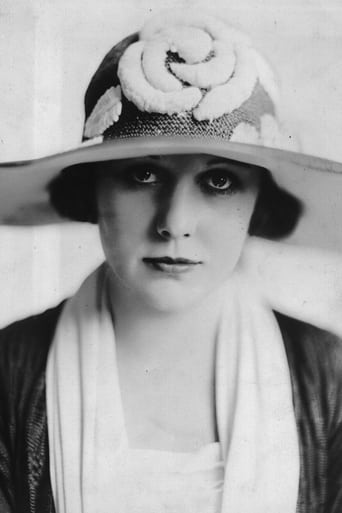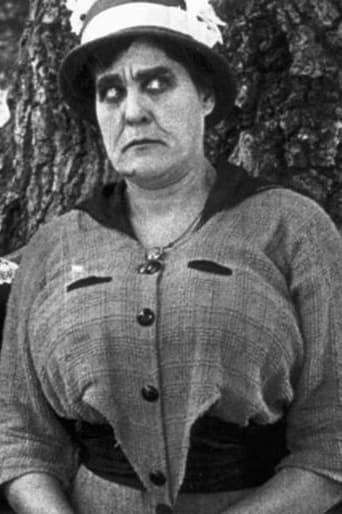Pluskylang
Great Film overall
ChanFamous
I wanted to like it more than I actually did... But much of the humor totally escaped me and I walked out only mildly impressed.
InformationRap
This is one of the few movies I've ever seen where the whole audience broke into spontaneous, loud applause a third of the way in.
Allison Davies
The film never slows down or bores, plunging from one harrowing sequence to the next.
Horst in Translation (filmreviews@web.de)
We're slowly approaching the point where Charlie Chaplin movies celebrate their 100th birthday. And a huge part of his work is still superior to many films made today. "The Vagabond" features some regular faces from other Chaplin films. Edna Purvance, who looks like a silent film version of Greta Gerwig with her long curly blonde hair, is on board again and so is the hilariously scary Eric Campbell, once again using his physical presence in another nice effort as Charlie's main antagonist. This film can be split into two halves, the first is pretty much drama, the second contains mostly romance and of course both feature a great deal of Charlie's trademark slapstick comedy.Chaplin, in his usual outfit, does some street music with his violin and afterward meets a girl who is held under slave-like conditions including lots of screaming and even lashing from her boss. After some fighting, a hilarious sequence that has Chaplin up a tree, Charlie and the object of his affection manage to get away. Back in safety, the two meet a well-dressed who quickly turns into a love interest for the girl. It's a decent little short film, which drags occasionally, but also has its moment. It's probably one of my favorite endings from Chaplin's body of work. The farewell hug is the greatest thing ever, just so beautiful and sad at the same time and the final twist was really cute too. Recommended.
Tom Gooderson-A'Court
A Musician-Tramp (Charlie Chaplin) leaves town following a chase to find himself in a gypsy camp. There he finds a poor abducted girl (Edna Purviance) who he attempts to cheer up with his music. Having witnessed a savage beating of the girl by the gypsy chieftain (Eric Campbell), the Tramp goes about saving the girl and setting her free. While attempting to woo her, a handsome artist chances by and has Edna sit for a portrait. The portrait attracts the attention of Edna's estranged family who attempt to take her away from the Tramp for good.I honestly can't think of a single Chaplin film during which I've laughed so little but on this occasion that is not a negative statement. Here Chaplin provides plenty of his trademark pathos and creates a film which is much more of a romantic drama than romantic comedy or slapstick comedy.The film drives to depths of sadness which I simply wasn't prepared for and around a minute before the end I was starring dumbfounded at the screen. Charlie's attempts to maintain the romance are endearing but you always get the feeling that they are futile. There is a level of romantic lyricism which I haven't found in any Chaplin release prior to this one. For the most part Chaplin foregoes comedy in favour of letting the story unfold and only finds time for the odd knock to the head or spitting of water. To me this film really shows the development of Chaplin from the slapstick comedian of his Keystone and early Essanay days, towards the kind of romantic pathos that he became renowned for by the early 1930s.Another obvious link between his early and latter career are the themes of the film. For me there is a link between this film and 1915s The Tramp and the idea of a beaten and brutalised gypsy girl is explored in even greater detail in 1928s The Circus. Both of those films end with the iconic footage of the Tramp walking away into the distance, happy and content, despite not getting the girl. The ending of The Vagabond seems to be heading down that line but thankfully takes a sharp turn. Given the sadness of the previous five or so minutes I don't think I could have taken any other ending! One interesting point about this film is the Tramp's entrance. The opening shot is of two saloon doors. After a few seconds some feet can be seen approaching the doors from the other side. After just a couple of frames it is obvious that it is the Tramp character from his distinctive walk, shoes and cane. Only those three things are visible until the doors open to reveal the whole man and it shows great confidence in the character's fame. I can think of no other screen character in history that could enter a scene with only their feet showing and the audience would know exactly who they are.Although The Vagabond is certainly not a film I'd recommend to someone unfamiliar with Chaplin's work, for those with an understanding of his history it is a momentous film. Despite very little actual comedy, Chaplin still plays with his audience's emotions and creates a memorable and poignant film that includes two outstanding performances from himself and frequent co-star Edna Purviance.www.attheback.blogspot.com
Michael DeZubiria
Chaplin starts out The Vagabond playing in a bar, basically as a street performer, but soon finds himself run out by the more fully developed band who is unhappy that he's stealing their customers. Soon he wanders out into the woods and almost aimlessly stumbles across a group of backwards country people. There is a hunch-backed hag of a woman that looks like a witch but is probably the wife of a mountain of a man who likes to beat the women around him and carries a huge whip wherever he goes. This guy is ripe for a slapstick smack down. There's an amusing scene where a young girl is beaten by the man and then Charlie shows up and tries to cheer her up by going nuts on the violin, succeeding only in getting too excited and falling into a tub of water behind him. After a series of unfortunate events, he trades his trademark cane in for a bigger stick and proceeds to knock out all the men in sight, finally making off with the young girl and the family's house, which is really just a horse-drawn wagon. I am curious about one of the first things that happens after he "liberates" her from her family. He takes a tub of water and roughly scrubs her face, sticking his fingers into her ears and nose while he washes her. The fact that he washes her face rather than allowing her to do it herself is obviously a physical comedy ploy, but it also gave me the feeling that he is sort of washing the country off of her, turning her into a respectable woman. At any rate, soon she stumbles upon an artist who finds her so beautiful that he wants to paint her, and the result is so wonderful that she gains a following in the uppity art world. Soon some rich art fans show up to take save her from a life in rags and bring her, presumably, to the big city. Charlie refuses a reward (or payment for selling the girl, as it were) and simply hugs the girl and probably wishes her good luck as she sets off in the big car. But the girl decides she doesn't want to leave without him, so they turn around and go back for him.This story is fraught with problems, of course, like if she would ever start to miss her family or if her upbringing in the big city would conflict with her background as a country girl, and the ending is also a little too cute and neat, but for Chaplin's early silent comedies, this is a very complex story with a definable beginning, middle and end. I felt a little uncomfortable during the face-washing scene, but overall this is definitely a higher quality example of Chaplin's early work.
hausrathman
In "The Vagabond," Charlie plays a street musician who rescues a girl, Edna Purviance, from a gypsy camp. They set up their own little camp and Charlie soon falls in love with Edna, but before long a rival soon appears in the form of a painter who asks Edna to model for him. A wealthy woman sees the painting in an exhibit and, as a result of a birthmark, recognizes Edna as her daughter who was stolen away as a child. The mother and painter come and sweep Edna up away from Charlie. However, as they drive away, she suddenly demands that they go back and get Charlie, who gets into the car with them and they all live happily ever after."The Vagabond," the third of Chaplin's twelve films for the Mutual Company, is probably the least humorous of the series, but it is also one of the most interesting. This film is essentially a melodrama, and serves as an important creative building block toward his heartfelt feature triumphs that would follow in the twenties and beyond. Chaplin's contract with Mutual gave him the freedom to experiment, and that he did. A film like this was a riskier proposition back in the age of slapstick when comedy was comedy and drama was drama. Today, this is not the first place to look for Chaplin the laugh-getter, but an interesting curio to examine when studying Chaplin's growth as an artist.






